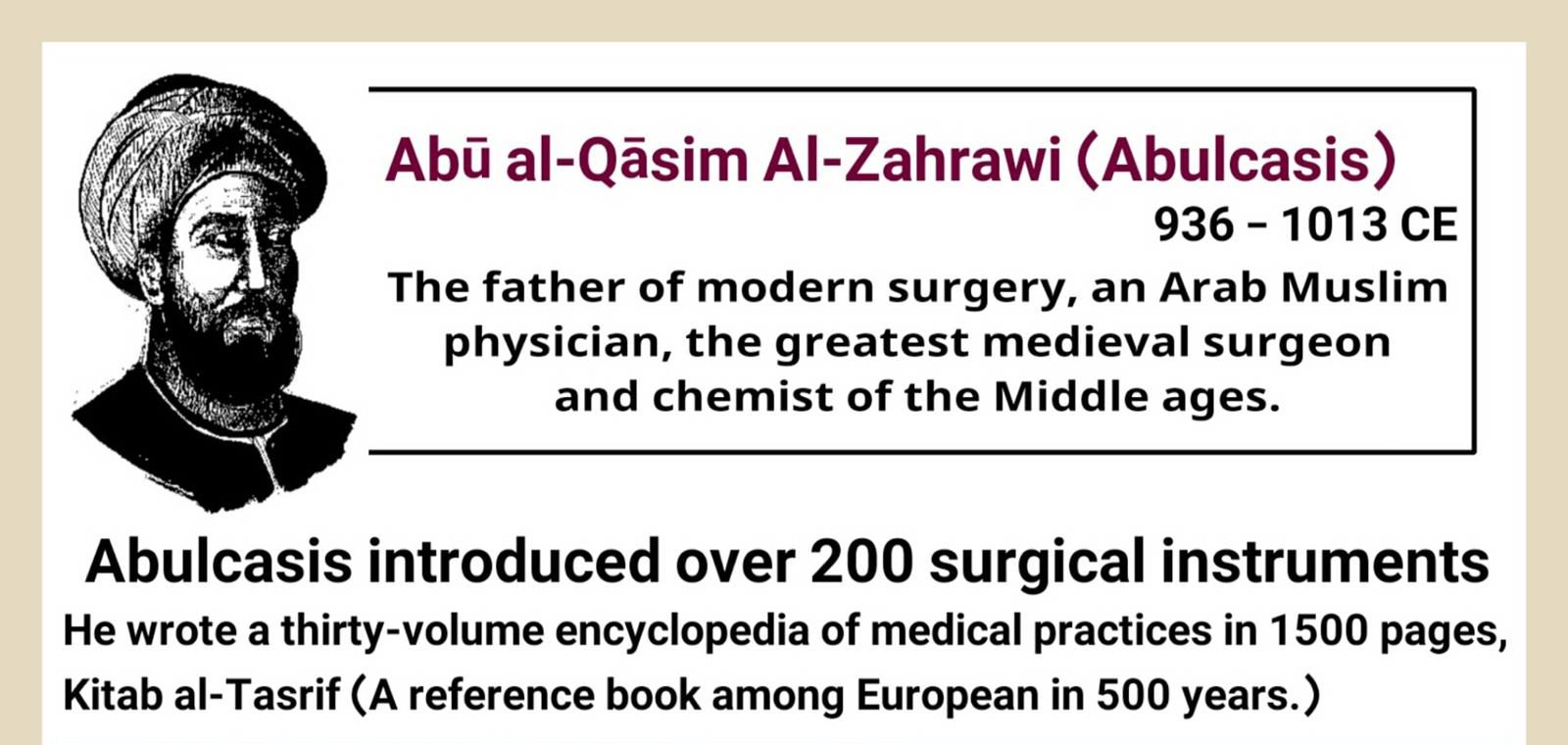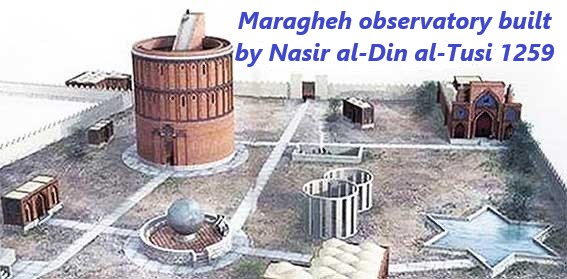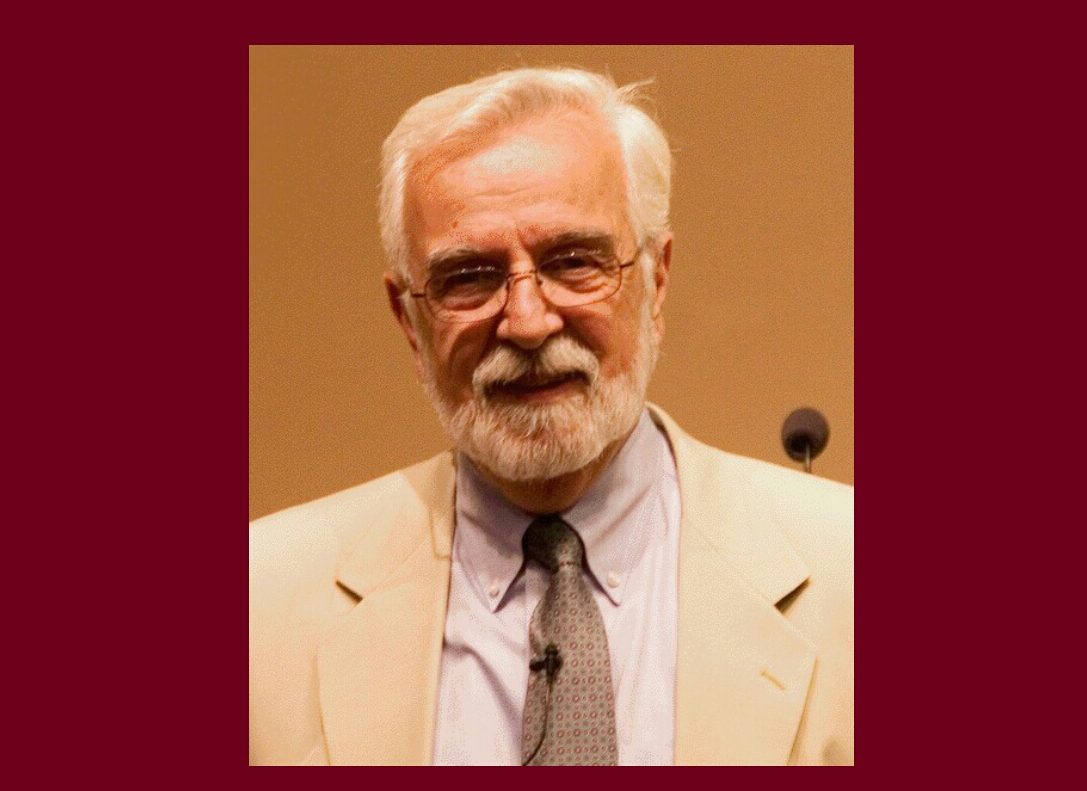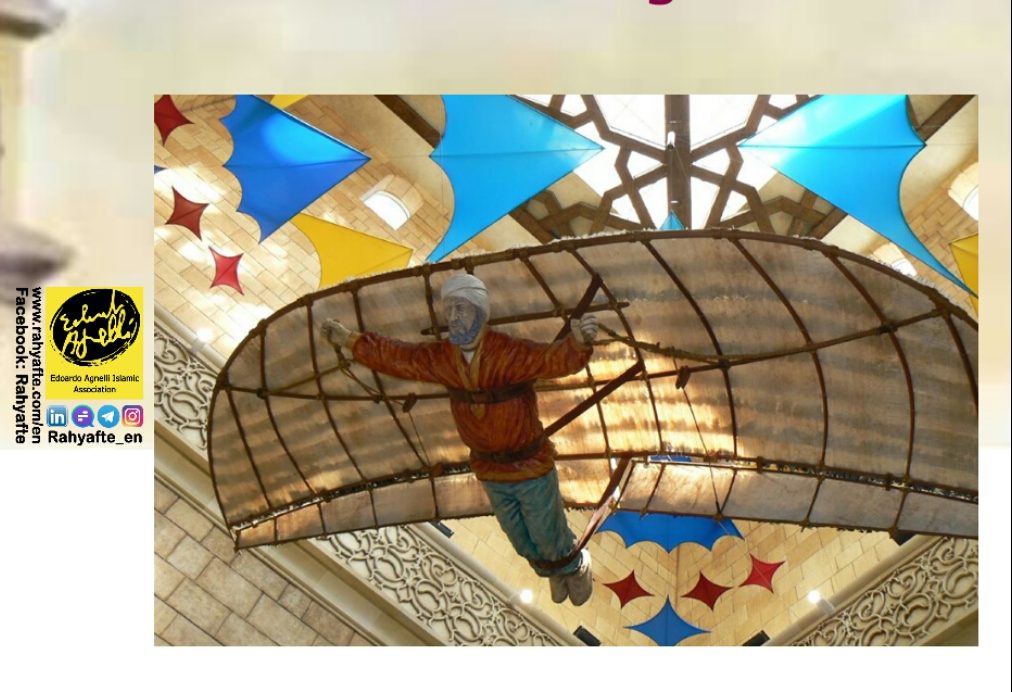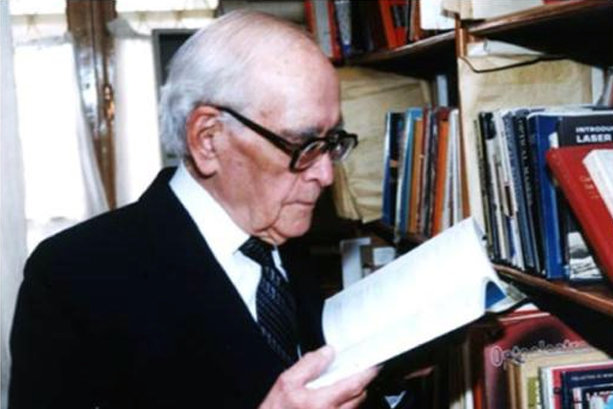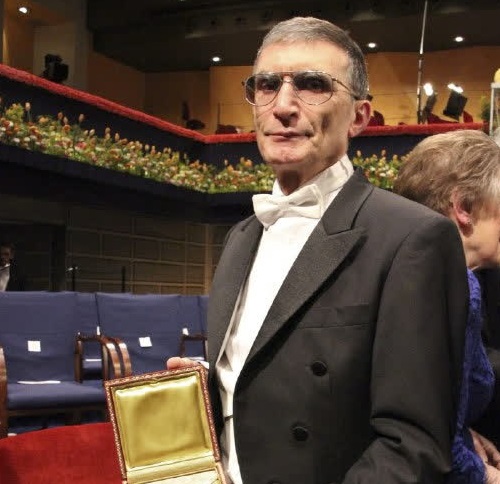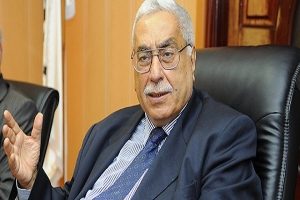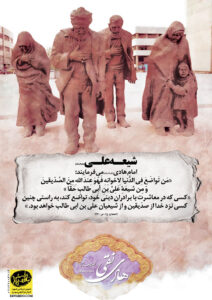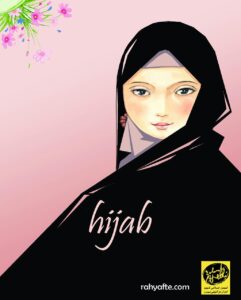According to rahyafte (the missionaries and converts website):Abū al-Qāsim Khalaf ibn al-‘Abbās al-Zahrāwī (Arabic: أبو القاسم خلف بن العباس الزهراوي; 936–1013), popularly known as Al-Zahrawi(الزهراوي), Latinised as Abulcasis (from Arabic Abū al-Qāsim), was an Arab Muslim physician, surgeon and chemist who lived in Al-Andalus.
He is considered the greatest medieval surgeon of the Islamic World and the Middle ages, and has been described as the father of surgery. His principal work is the Kitab al-Tasrif, a thirty-volume encyclopedia of medical practices. The surgery volume in this encyclopedia was later translated into Latin where it received a popularity and became the standard text book in Europe for the next 500 years.
Al-Zahrawi’s pioneering contributions to the field of surgical procedures and instruments had an enormous impact in the East and West well into the modern period, where some of his discoveries are still applied in medicine to this day. He was the first physician to describe an Abdominal pregnancy a sub type of ectopic pregnancy, and the first physician to identify the hereditary nature of haemophilia.
Biography
Al-Zahrawi was born in the city of Azahara, 8 kilometers northwest of Cordova, Andalusia. The nisba (attributive title), Al-Ansari, suggests origin from the Medinian tribe of Al-Ansar. He lived most of his life in Cordova. It is also where he studied, taught and practiced medicine and surgery until shortly before his death in about 1013, two years after the sacking of El-Zahra. Few details remain regarding his life, aside from his published work, due to the destruction of El-Zahra during later Castillian-Andalusian conflicts. His name first appears in the writings of Abu Muhammad bin Hazm (993 – 1064), who listed him among the greatest physicians of Moorish Spain. But we have the first detailed biography of al-Zahrawī from al-Ḥumaydī’s Jadhwat al-Muqtabis (On Andalusian Savants), completed six decades after al-Zahrawi’s death.
Al-Zahrawi was a court physician to the Andalusian caliph Al-Hakam II. He devoted his entire life and genius to the advancement of medicine as a whole and surgery in particular. His best work was the Kitab al-Tasrif, discussed below. Al-Zahrawi specialized in curing disease by cauterization. He invented several devices used during surgery, for purposes such as inspection of the interior of the urethra, applying and removing foreign bodies from the throat, inspection of the ear, etc. He is also credited to be the first to describe ectopic pregnancy in 963, in those days a fatal affliction.
Al-Zahrawi was the first to illustrate the various cannulae and the first to treat a wart with an iron tube and caustic metal as a boring instrument. He was also the first to draw hooks with a double tip for use in surgery. He was a contemporary of Andalusian chemists such as Ibn al-Wafid, Maslamah Ibn Ahmad al-Majriti and Artephius.
Kitab al-Tasrif
Al-Zahrawi’s thirty-volume medical encyclopedia, Kitab al-Tasrif, completed in the year 1000, covered a broad range of medical topics, including on surgery, medicine, orthopaedics, ophthalmology, pharmacology, nutrition, dentistry, childbirth, and pathology. The first volume in the encyclopedia is concerned with general principles of medicine, the seconed with pathology, while much of the rest discuss topics regarding pharmacology and drugs. The last tretise and the most celebrated one is about surgery. Al-Zahrawi stated that he chose to discuss surgery in the last volume because surgery is the highest form of medicine, and one must not practice it until he becomes well-acquainted with all other branches of medicine.
The work contained data that had accumulated during a career that spanned almost 50 years of training, teaching and practice. In it he also wrote of the importance of a positive doctor-patient relationship and wrote affectionately of his students, whom he referred to as “my children”. He also emphasized the importance of treating patients irrespective of their social status. He encouraged the close observation of individual cases in order to make the most accurate diagnosis and the best possible treatment.
Not always properly credited, modern evaluation of al-tasrif manuscripts has revealed on interesting descriptions of medical procedures that were ascribed to later scholars. For example, Al-Zahrawi’s al-Tasrif described both what would later become known as “Kocher’s method” for treating a dislocated shoulder and “Walcher position” in obstetrics. Morover, Al-Tasrif described how to ligature blood vessels almost 600 years before Ambroise Paré, and was the first recorded book to explain the hereditary nature of haemophilia. He was also the first to describe a surgical procedure for ligating the temporal artery for migraine, also almost 600 years before Pare recorded that he had ligated his own temporal artery for headache that conforms to current descriptions of migraine. Al-Zahrawi was therefore the first to describe the migraine surgery procedure that is enjoying a revival in the 21st century, spearheaded by Elliot Shevel a South African surgeon.
Al-Zahrawi also pionered neurosurgery and neurological diagnosis. He is known to have performed surgical treatments of head injuries, skull fractures, spinal injuries, hydrocephalus, subdural effusions and headache. He developed material and technical designs which are still used in neurosurgery. The first clinical description of an operative procedure for hydrocephalus appears in the Al-Tasrif which clearly describes the evacuation of superficial intracranial fluid in hydrocephalic children. He described it in his chapter on neurosurgical disease, describing infantile hydrocephalus as being caused by mechanical compression. He wrote:
“The skull of a newborn baby is often full of liquid, either because the matron has compressed it excessively or for other, unknown reasons. The volume of the skull then increases daily, so that the bones of the skull fail to close. In this case, we must open the middle of the skull in three places, make the liquid flow out, then close the wound and tighten the skull with a bandage.”
Additionally, other aspects of medicine are discussed in the Al-Tasrif. For instance, in one of the early volumes, Al-Zahrawi wrote about the way to diagnose diseases and remarked that a good doctor should always rely on his own observations of a patient and his/her symptoms, rather than just accepting what is being said by the patient. Al-Zahrawi also wrote about the relationship between health and food. Parts of the A l-Tasrif were dedicated to discussing what foods that one should avoid, the maintenance of a healthy diet, and the use of food as part of a treatment plan.
Surgery and Instruments

Surgery and Instruments is the thirteenth and last volume of Kitab al-Tasrif. It is without a doubt his most important volume and the one which established Al-Zahrawi authority in Europe for centuries to come. On Surgery and Instruments is the first illustrated surgical guide ever written. Its contents and descriptions has contributed in many technological innovations in Medicine, notably which tools to use in specific surgeries. In his book, al-Zahrawi draws diagrams of each tool used in different procedures to clarify how to carry out the steps of each treatment. The full text consists of three books, intended for medical students looking forward to gaining more knowledge within the field of surgery regarding procedures and the necessary tools. The book was translated in the 12t century by Gerard of Cremona into Latin under the title of “De chirurgia”. It soon found popularity in Europe and became a standard text in all major Medical universities like those of Salerno and Montpellier. It remained the primary source on surgery in Europe for the next 500 years, and as the historian of midicine, Arturo Castiglioni, has put it: al-Zahrawi’s treatise “in surgery held the same authority as did the Canon of Avicenna in medicine”.
Al-Zahrawi claims that his knowledge comes from careful reading of previous medical texts as well as his own experience: “…whatever skill I have, I have derived for myself by my long reading of the books of the Ancients and my thirst to understand them until I extracted the knowledge of it from them. Then through the whole of my life I have adhered to experience and practice…I have made it accessible for you and rescued it from the abyss of prolixity”.
In the beginning of his book, al-Zahrawi states that the reason for writing this treatise was the degree of underdevelopment surgery had reached in the Islamic world, and the low status it was held by the physicians at the time. Al-Zahrawi ascribed such decline to lack of anatomicalknowledge and misunderstanding of the human phisiology.
Noting the importance of anatomy he wrote:
“Before practicing surgery one should gain knowledge of anatomy and the function of organs so that he will understand their shape, connections and borders. He should become thoroughly familiar with nerves muscles bones arteries and veins. If one does not comprehend the anatomy and physiology one can commit a mistake which will result in the death of the patient. I have seen someone incise into a swelling in the neck thinking it was an abscess, when it was an aneurysm and the patient dying on the spot.”
In Urology, Abulcasis wrote about taking stones out of the bladder. By inventing a new instrument, an early form of the lithotrite which he called “Michaab”, he was able to crush the stone inside the bladder without the need for Surgical incision. His technique was important for the development of lithotomy, and an improvement over the existing techniques in Europe which caused severe pain for the patient, and came with high death rates.
In dentistry and Orthodontics, Abulcasis had the most significant contribution out of all Muslim physicians, and his book contained the earliest illustrations of dental instruments. He was known to use gold and silver wires to ligate loosened teeth, and has been credited as the first to use replantation in the history of dentistry. Abulcasis also invented instruments to scale the calculus from the teeth, a procedure he recommended as a prevention from periodontal disease.
Surgical instruments described by al-Zahrawi
Abulcasis introduced over 200 surgical instruments, which include, among others, different kind of scalpels, Retractors, curette and also instruments designed for his favoured techniques of cauterization and ligature. Many of these instruments were never used before by any previous surgeons. His use of catgut for internal stitching is still practised in modern surgery. The catgut appears to be the only natural substance capable of dissolving and is acceptable by the body. An observation Al-Zahrawi discovered after his monkey ate the strings of his Oud. Al-Zahrawi also invented the forceps for extracting a dead fetus, as illustrated in the Al-Tasrif.
This material is made from the lining of the intestines of animals, and was for a long time the only material that could have been used for stitches and still be absorbed by the human body.
- Ancient crypt with seven mummies contained ‘magical’ inscriptions
- Ancient bamboo medical books uncovered in China belonged to legendary Bian Que
- Medieval Medicine: 1,000-year-old Onion and Garlic Salve Kills Modern Bacterial SuperBugs
The use of cat intestines for this purpose meant that there was no need for a second surgery to remove the internal stitches. Another innovation said to be first used by Al-Zahrawi, and later became standard practice in the field of surgery, is the usage of ink to mark the incisions in patients preoperatively.
In pharmacy and pharmacology, Al-Zahrawi pioneered the preparation of medicines by sublimation and distillation. His Liber Servitoris is of particular interest, as it provides the reader with recipes and explains how to prepare the “simples” from which were compounded the complex drugs then generally used.
Tone
Throughout the text, Al-Zahrawi uses an authoritative tone to declare his expertise on the topic. For example, when introducing topics or describing procedures, Al-Zahrawi often warns the reader of the skills necessary to complete the task. In chapter forty-eight, “On cauterization for numbness”, he defines the required knowledge for the procedure in a commanding tone: “This should not be attempted except by one who has a good knowledge of the anatomy of the limbs and of the exits of the nerves that move the body”. He invents a criterion to generate a standard of skill level, indicating that he himself has surpassed it due to training and experience. As such, he reiterates his preeminence by implying that he is part of an exclusive group of learned surgeons capable of correctly completing this cautery. In another instance, he states that the procedure should be avoided completely by incompetent surgeons: “However, no one should attempt this operation unless he has had long training and practice in the use of cautery”.
Al-Zahrawi was not afraid to depart from old practice, for example, he openly disparages the opinion that cauterization should only be used in the spring season: “…the Ancients…[affirmed] that spring was the best. Myself, I say that cautery is suitable at all times”. Four pages later, he again opposes the opinion that gold is the best material for cauterization, stating that iron is actually his preferred metal: “therefore in our own opinion cauterization is swifter and more successful with iron”. In chapter twenty-nine, “On cauterization for pleurisy”, he states: “Now one of the Ancients mentioned that there were some people who used an iron cautery shaped like a probe, and introduced it red hot into the intercostal space until it reached the abscess itself and evacuated the pus…but in this perforation with the cautery there is a danger either that the patient may die on the spot or that an incurable fistula may rise in its place”.
Legacy
Al-Zahrawi was the “most frequently cited surgical authority of the Middle Ages”. Donald Campbell, a historian of Arabic medicine, described Al-Zahrawi’s influence on Europe as follows:
The chief influence of Albucasis on the medical system of Europe was that his lucidity and method of presentation awakened a prepossession in favour of Arabic literature among the scholars of the West: the methods of Albucasis eclipsed those of Galen and maintained a dominant position in medical Europe for five hundred years, i.e long after it had passed its usefulness. He, however, helped to raise the status of surgery in Christian Europe; in his book on fractures and luxations, he states that ‘this part of surgery has passed into the hands of vulgar and uncultivated minds, for which reason it has fallen into contempt.’ The surgery of Albucasis became firmly grafted on Europe after the time of Guy de Chauliac (d.1368).
Serefeddin Sabuncuoglu (1385-1468) was a surgeon who lived in Amasia in central Anatolia. He wrote his book Cerrahiye-tu l-Hanniyye in 1460 at the age of 80 after serving for many years as a chief surgeon in Amasiya Hospital (Darussifa) for years. His text Cerrahiye-tu l-Hanniyye was presented to Sultan Mohammad the conqueror, but the manuscript disappeared afterwards until it emerged in the 1920s. The book is roughly a translation of Al-Tasrif of Al-Zahrawi, but Sabuncuoglu added his own experiences and brought interesting comments on previous application, besides that every surgical procedure is illustrated in his work.
William Hunter (1717-1783) used Arabic manuscripts for his study on Aneurysm. Among them was a copy of Al-Zahrawi’s Kitab al-Tasrif. In his biography of William Hunter, Sir Charles lllingworth, the author described the circumstances and the context of the purchase by William Hunter of an Arabic manuscript of Al-Tasrif of Al-Zahrawi, which he obtained from Aleppo in Syria.
Al Zahrawi was described by Pietro Argallata (died 1423) as “without doubt the chief of all surgeons”. Jaques Delechamps (1513-1588), another French surgeon, made extensive use of At-Tasrif in his elaborate commentary, confirming the great prestige of Al Zahrawi throughout the Middle Ages and up to the Renaissance.
Hakim Saead, from Hamdard Foundation in Karachi, Pakistan, has a permanent display of silver surgical instruments of Al-Zahrawi in the library of the Foundation. He also published a colour booklet. Professor Ahmed Dhieb of Tunis has also studied the surgical instruments and reconstructed them; they were displayed in the 36th International Congress for the History of Medicine held in Tunis City in Tunisia. In this exhibition, all surgical instruments of Al-Zahrawi were described and illustrated in detail in three languages – Arabic, French and English under the title Tools of Civilisation.
In the 14th century, the French surgeon Guy de Chauliac quoted al-Tasrif over 200 times. Pietro Argallata (d. 1453) described Al-Zahrawi as “without doubt the chief of all surgeons”. Al-Zahrawi’s influence continued for at least five centuries, extending into the Renaissance, evidenced by al-Tasrif’s frequent reference by French surgeon Jacques Daléchamps (1513–1588).
Thus, in conclusion, Al-Zahrawi was not only one of the greatest surgeons of medieval Islam, but a great educationist and psychiatrist as well. He devoted a substantial section in the Tasrif to child education and behaviour, table etiquette, school curriculum, and academic specialisation. The street in Cordova where he lived is named in his honor as “Calle Albucasis”. On this street he lived in house no. 6, which is preserved today by the Spanish Tourist Board with a bronze plaque (awarded in January 1977) which reads: “This was the house where Al-Zahrawi lived.”
Refrences
http://www.ancient-origins.net
http://www.islamicmedicine.org
http://www.aps.eg.net/back_issue/vol2/issue2_april2006/pdf/1-Al%20Zahrawi.pdf
DUA: Allah please accept this from us. You are All-Hearing and All-Knowing. You are The Most Forgiving.You are The Most Relenting and repeatedly Merciful. Allah grant us The Taufiq to read all the 5 prayers with sincerity.
(Taken from: To Be Earnest In Prayers By Amina Elahi)
■ Feel Free to Share the posts with your Friends…
■ You too can take part and help us in sharing the knowledge…
■ May ALLAH SWT reward you for conveying His Message To Mankind
